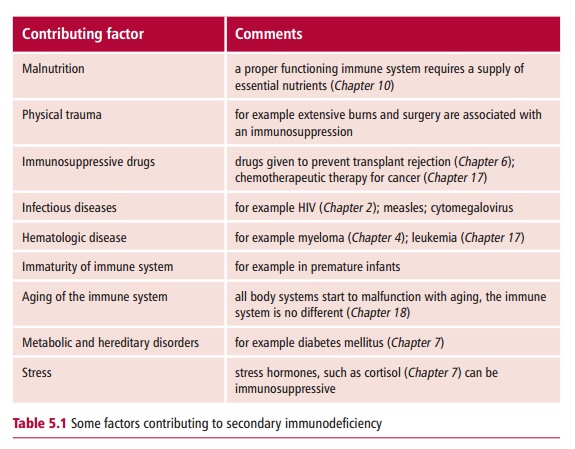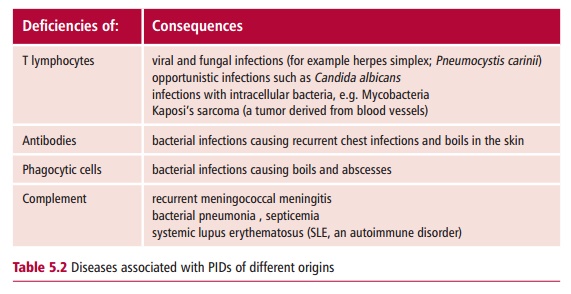Chapter: Biology of Disease: Disorders of the Immune System
Immunodeficiency Diseases
IMMUNODEFICIENCY DISEASES
Immunodeficiency diseases result from a failure of
one or more components of the immune system and may involve the absence or
malfunction of organs, cells or proteins of the immune system. Where the
immunodeficiency results from a direct defect within the immune system, the
disease is classified as a primary
immunodeficiency (PID). All PIDs are inherited or have a geneticcomponent.
Most, but not all, primary deficiencies are congenital, that is are present
from birth, although some do not manifest themselves until later in life. Secondary immunodeficiencies (SIDs)
arise as a consequence of other conditions. For example, some viruses are
associated with an immunosuppression, which may be transient, as for example in
measles, or permanent, as in HIV infection. Conditions that can give rise to
secondary immunodeficiency are listed in Table
5.1.

Patients with immunodeficiency diseases invariably
suffer infections more frequently and with increased severity although the type
of infection depends to a large extent on the nature of the immune deficit.
Some general rules to guide diagnoses are given in Table 5.2. Other types of disorder may also arise as a consequence
of a PID. So, for example, deficiencies of some complement proteins may lead to
systemic lupus erythematosus (SLE), an autoimmune disorder. Certain types of
cancer, such as non-Hodgkins lymphoma, a tumor of the lymph glands, and
Kaposi’s sarcoma, a tumor derived from blood vessels and which frequently shows
in the skin, are also more frequent in the immunodeficient patient, because
these tumors are linked to infections with certain viruses.

Related Topics